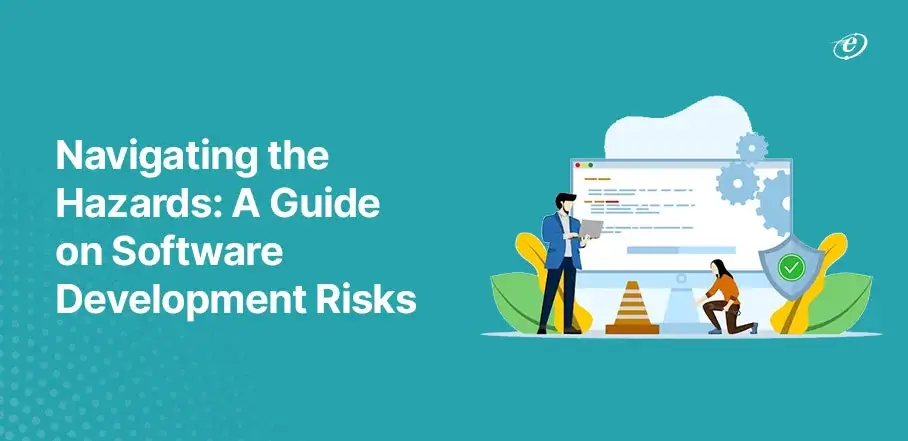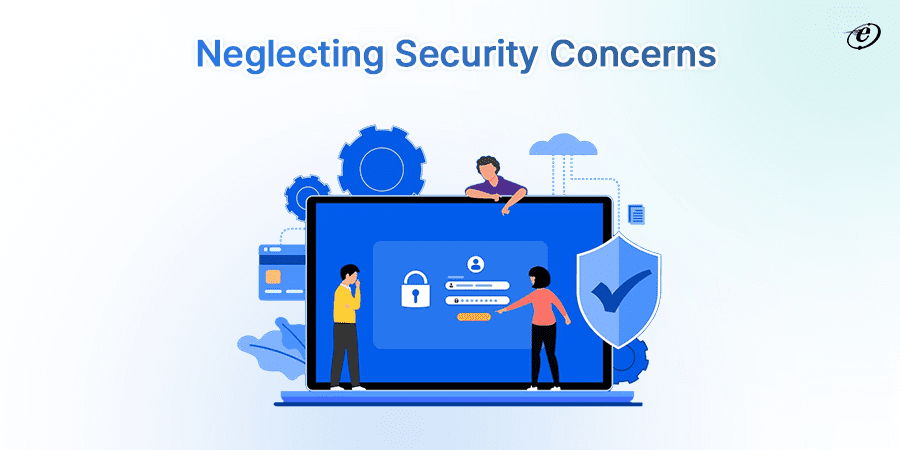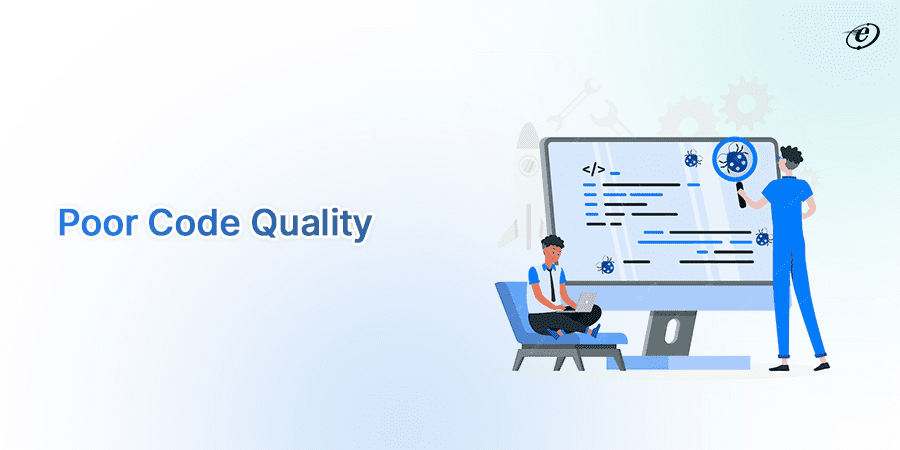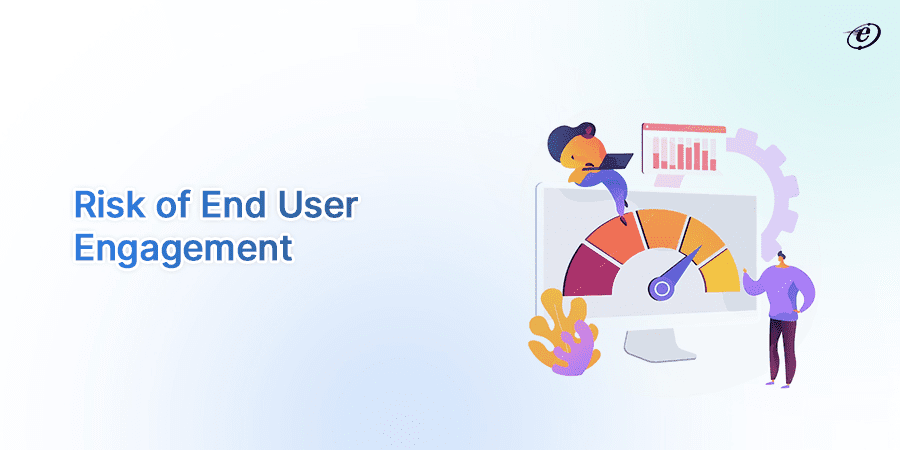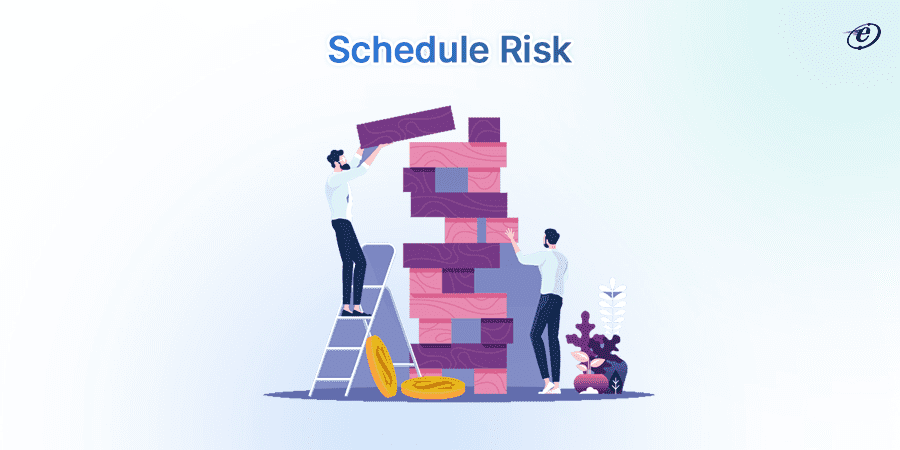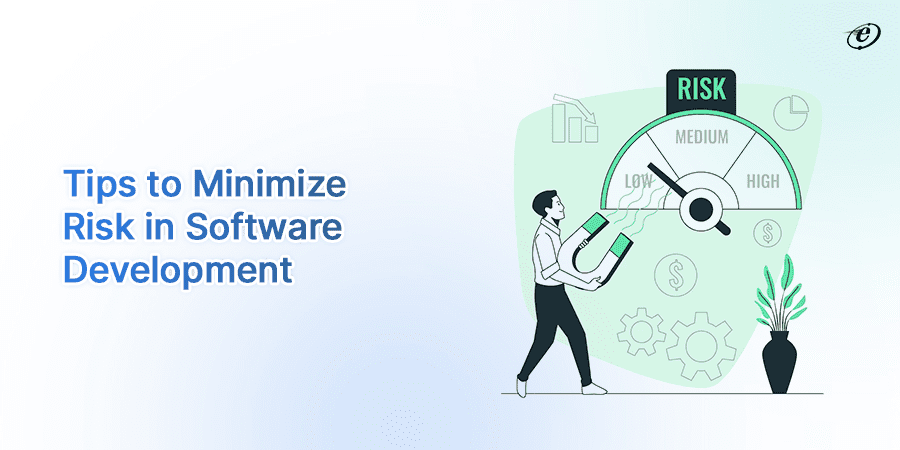“All businesses are risky if they don’t invest in risk management.”
Gary Cohn, Vice Chairman of IBM
Software development risks are anything that could jeopardize your digital project’s success.
Software development necessitates a high degree of technical and managerial knowledge because it involves several stages of design, documentation, programming, and testing.
There are numerous internal and external risks in software development. Finding software risks is essential to delivering a high-quality product and accomplishing objectives.
Ignoring risks in software development could cause your company to face unanticipated difficulties. Here are a few real-world instances:
- In 2021, the IT sector spent around $5473 million on integrated risk management worldwide.
- Approximately 40% of internet users globally encountered cybercrime at some point in 2022. The United States came in second place, with 49% of respondents stating they have encountered online crime.
- A study by the Consortium for IT Software Quality estimates that software faults cost US companies $2.41 trillion a year, or $5.2 million on average per software project.
- In 2021, the IT sector spent around $5473 million on integrated risk management worldwide.
- 20% of startups fail in the first year, 50% within five years, and 65% within 10 years. (Source: Investopedia)
As a leading software development company, we have experienced almost 90% of software errors being introduced throughout the requirements, design, and coding phases of software development. This emphasizes how crucial it is to carry out efficient risk assessments from the outset of the process.
This write-up will give you important insights into the significance of risk analysis and management in modern software development, the top software development risks, and how to manage and prevent them, whether you work as a software developer, project manager, or risk management specialist.
Let’s begin by briefly defining the software development risks.
What are Software Development Risks?
Potential dangers or uncertainties that could negatively affect a software project’s ability to be completed successfully are risks in software development. Operational errors increase the risk that the client or development team will lose resources with little or no compensation, reducing the chance that the project will succeed.
These risks can take many forms, including misalignment of stakeholders, scope creep, budget overruns, scheduling delays, and technological difficulties. They may stem from inadequate requirements analysis, technological complexity, inexperienced team members, or external dependencies.
Throughout the software development lifecycle, these risks must be identified, evaluated, prioritized, and mitigated as part of effective risk management. Teams can improve project predictability, reduce disruptions, and raise the probability of producing high-quality software products by proactively addressing potential problems.
Let’s understand in detail why risk management in software development is essential.
Explore the software development best practices in 2024.
Software Development Risk Management: Why is it Essential?
Reliable software development companies identify project risks with the aid of software security measures. There are several reasons why detecting risk is so crucial. Reducing possible risks is the main goal of software development risk management, but there are other reasons too. These consist of:

-
Identifying Potential Issues
Risk management helps in identifying potential problems or challenges that may arise during the development process. By identifying these risks early on, dedicated development teams can proactively avoid them before they escalate into larger issues.
-
Effective Communication
The sponsors and stakeholders of the project can be reassured that everything will go according to plan when you walk them through your software development risk management plan. They are more likely to have faith in the project team and the finished result when they observe that possible risks are being forcefully addressed.
-
Enhanced Decision Making
Project managers and stakeholders can make more informed decisions by understanding and evaluating risks. This includes decisions related to resource allocation, project priorities, and mitigation strategies.
-
Project Evaluation
Due to the project team’s lack of foresight, more than 32% of projects fail. Software development initiatives have strengths, flaws, hazards, and unrealized potential that can be identified by identifying the project’s risks.
Explore the difference between end-to-end testing vs integration testing.
-
Quality Assurance
Managing risks contributes to improving the quality of the software product. By addressing potential issues early, teams can focus on delivering a product that meets the required standards and satisfies customer expectations.
Read a detailed guide to the QA process in Agile to elevate software quality.
-
Cost Reduction
Addressing risks early in the development lifecycle helps reduce the overall cost of the project. It is often more expensive to fix issues later in the development process or after the software has been deployed.
Overall, risk management in software development is essential for minimizing uncertainties, maximizing opportunities, and ultimately delivering successful software products that meet the needs of stakeholders.
Let’s cover the most common risks involved in software development.
Software Risks Examples
Before analyzing the main risks and their solutions in depth, it is essential to take a quick look at the common risks in developing software.
Here are some of the common categories.
Scope Creep
This condition happens when the project’s features and functionalities keep expanding beyond the original plan. This can lead to budget overruns, missed deadlines, and a final product that doesn’t meet the core requirements.
Technical Risks
These risks can involve anything from choosing the wrong programming language or technology to unforeseen technical hurdles during development.
Budget Risks
Inaccurate cost estimations, scope creep, and poor management of resources can all lead to a project going over budget. This risk can strain relationships with clients and funders.
People Risks
These can include a lack of qualified developers, poor communication within the team, or even problems with clients or stakeholders not being clear about their expectations.
Awareness of these risks and implementing good project management practices can increase the chances of preventing or mitigating them.
Top 10 Software Project Risks and Mitigation Examples
Let’s have a look at the software development risks, their effects, and its best mitigation methods.
1. Inadequate Project Assessment
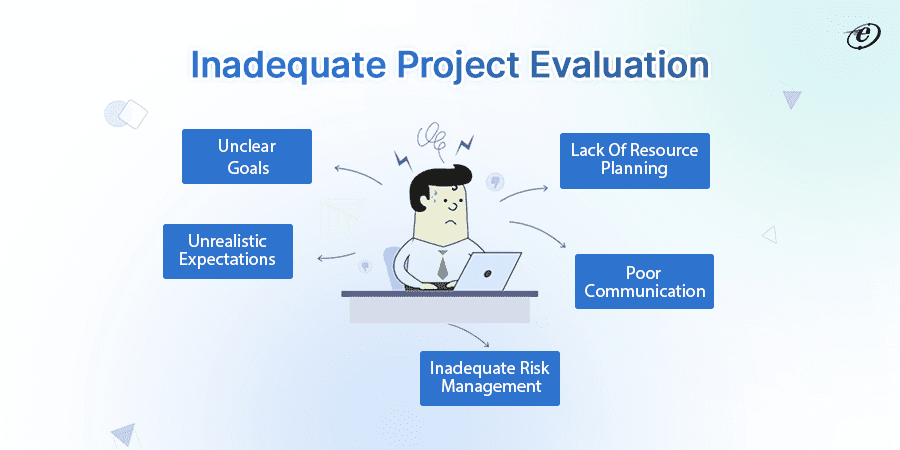
Dedicated development teams may find it difficult to properly assign resources and prioritize work if project boundaries need to be clarified. Delays in delivery, resource overruns, and incorrect expectations can all arise from a poorly defined project scope.
When the project team underestimates the duration of a project, milestone, or iteration, inaccurate estimations result. Software estimations can lead to longer project timelines and, consequently, higher project costs, which can cause issues between developers and clients.
Even though estimates are frequently an inevitable aspect of software development, a risk is involved if the estimates lead to unmet expectations.
How to Avoid This Risk?
To avoid inadequate project assessment risks:
- Conduct a thorough initial project scoping to identify objectives and requirements.
- Involve key stakeholders early to gather comprehensive input and insights.
- Employ experienced project managers to oversee assessment processes.
- Utilize proven project assessment methodologies and tools.
- Allocate sufficient time and resources for assessment activities.
- Regularly review and reassess project progress against predefined metrics and benchmarks.
- Foster open communication channels to address any issues or challenges promptly.
- Prioritize ongoing learning and improvement to refine assessment practices iteratively.
- Seek external expertise or audits for impartial evaluation when necessary.
- Document assessment findings and lessons learned for future projects.
2. Poor Project Management Practices

Inadequate project planning, unclear communication, ineffective resource allocation, and insufficient monitoring and control are examples of poor project management.
When resources are not allocated and planned for effectively, it frequently results in budget overruns and schedule delays. Furthermore, poor project management can lead to failure, a tarnished reputation, and a decline in stakeholder confidence.
Find the best practices followed by front end development companies.
Since unclear goals, ambiguous roles, and ineffective leadership contribute to disorder and inefficiency, poor project management also impacts team morale and productivity. Ultimately, it can result in a drop in competitiveness, a degraded quality of goods, and an inability to satisfy consumer demand.
How to Avoid This Risk?
To mitigate risks arising from poor project management:
- Implement robust project planning and scheduling processes.
- Foster open and transparent communication channels among team members and stakeholders.
- Encourage collaboration and teamwork to enhance productivity and morale.
- Ensure alignment of project goals with organizational objectives.
- Continuously evaluate and improve project management practices based on lessons learned.
- Define clear project objectives, scope, and deliverables.
- Allocate resources effectively and monitor their utilization.
- Regularly assess project progress and adjust plans as needed.
- Empower and support project managers with adequate training and resources.
3. Operational Risk
Operational risk is a term that describes procedural risks, such as software development risks, that arise during regular project operations due to incorrect process implementation or external operational risks. It may arise from many things, such as mistakes made by people, malfunctioning systems, insufficient processes, and outside events.
Operational issues could negatively impact the results of a project. In addition to making plans for the project’s effective completion, project management must strike a balance between the demands of the dedicated development team and those of the clients.
Let’s see how to mitigate this risk in software development.
How to Avoid This Risk?
To avoid operational risks in software development:
- Conduct routine audits and reviews to identify and address potential operational weaknesses.
- Implement rigorous testing protocols to identify and address bugs and vulnerabilities.
- Monitor system performance and scalability to prevent operational bottlenecks.
- Implement redundancy and failover mechanisms to maintain service continuity.
- Establish clear documentation and standard operating procedures for development, deployment, and maintenance.
- Enforce access controls and data encryption measures to protect sensitive information.
- Provide ongoing training and support for developers and operational staff.
- Encourage a continuous improvement and accountability culture to reduce operational risks.
Find the top 10 automated testing tools in 2024.
4. Ignoring Security Vulnerabilities
Security risks are vulnerabilities that could jeopardize confidentiality, dependability, or accessibility. These vulnerabilities have grown more prevalent over time. Therefore, to ensure the success of your initiatives, risk management software development must address security threats.
There are security risks in practically every aspect of software development, and they can lead to financial loss, reputational harm, and identity theft. An organization may lose its licenses and authorization to conduct business in a certain market if security issues are not addressed.
Find the top Front end development security best practices.
Inadequate security protocols may result in adverse effects, including compromised data, unapproved entry, and possibly misappropriation of confidential data. These situations can damage a business’s brand, cause significant financial losses, and damage user confidence.
How to Avoid This Risk?
To avoid security risks:
- Conduct regular security assessments and code reviews.
- Stay updated on emerging threats and security best practices.
- Implement secure coding standards and practices.
- Utilize automated security testing tools to identify vulnerabilities.
- Patch and update software components promptly to address known security issues.
- Encrypt sensitive data and implement access controls.
- Educate developers and stakeholders about the importance of security.
- Implement secure authentication and authorization mechanisms.
- Engage with security experts and communities for guidance and support.
Discover web application penetration testing methodology.
5. Low Stockholder Engagement
Everyone participating in software development has a stake in the project’s successful outcome and is called a stockholder. If there is no expectation management or regular communication between the project development team and stockholders, many unavoidable issues will arise.
When a client or stakeholder with whom you are collaborating needs to interact with your team more regularly to sustain high productivity levels, this is known as low stakeholder engagement. It is one of the significant software development risks, as delayed client replies can delay delivery schedules.
These risks could be associated with a project’s budget and schedule, but they could also be caused by subpar builds, wrong functionalities, a misinterpretation of the product’s objectives, and improper marketing.
Here are a few of our tried-and-tested measures to avoid this risk in software development.
How Can I Avoid This Risk?
To avoid the risk of low stakeholder engagement in software development:
- Establish clear and frequent communication channels with stakeholders.
- Actively involve stakeholders in project planning and decision-making processes.
- Provide daily updates on project progress and milestones.
- Tailor communications to stakeholder preferences and priorities.
- Define clear roles and responsibilities for stakeholders.
- Conduct regular meetings and workshops to foster collaboration.
- Prioritize stakeholder needs and expectations in project planning and execution.
- Use stakeholder engagement tools such as surveys and interviews to gather feedback.
6. Exceeding Budget
Budgetary issues are one of the serious software development risks. Financial risks arising mainly from budget overruns are called budget-related risks. Project finances should always be handled in accordance with the decisions made; however, if project finances are improperly handled, budget issues will result. Therefore, effective financial management and distribution are necessary for project success; otherwise, project failure may result.
Inadequate resources may also make you vulnerable to dangers to your budget that need to be sufficiently considered. You must establish a reasonable budget, keep a close eye on project expenses, and implement appropriate cost management procedures to control these risks.
How to Avoid This Risk?
To avoid exceeding budget risk in software development:
- Conduct thorough project estimation and budget planning.
- Identify and prioritize essential project requirements to prevent scope creep.
- Monitor project expenses closely and track them against budget targets.
- Implement effective resource allocation strategies.
- Regularly review and adjust the budget based on evolving project needs.
- Utilize cost-effective development tools and technologies.
- Identify and mitigate potential cost overruns early in the project lifecycle.
- Implement agile budgeting practices to adapt to changing requirements.
7. Low Quality Code
In software development, low code quality poses various risks that can significantly affect a project’s overall success. There are several possible reasons for low-quality code. One may be hurried and released without proper testing, so it has several flaws.
Moreover, poor performance might result from inefficient code, which can also lower system effectiveness and provide less than ideal user experiences. Finally, intricate or inadequately documented code makes it more difficult for outsourcing developers to get started, hindering productivity and raising project risks and schedules.
How to Avoid This Risk?
To avoid risks arising from low-quality code:
- Adhere to coding standards and best practices.
- Conduct regular code reviews and quality assessments.
- Provide ongoing training for developers on coding techniques and quality standards.
- Prioritize refactoring and code optimization to improve maintainability.
- Utilize static code analysis tools to identify and address potential issues.
- Foster a culture of code ownership and accountability within the development team.
- Encourage collaboration and knowledge sharing among developers.
- Implement robust documentation practices to facilitate understanding and future maintenance.
8. End User Engagement Risk
Creating a product that is helpful to some individuals is the ultimate aim of a reliable software development company. There is a significant risk if these individuals experience issues utilizing the finished product. Whether the program is for internal use only or for external customers, end-user engagement is essential to the project’s success.
End-user engagement risk in software development refers to the potential challenge of adequately involving end users throughout the development process. Insufficient engagement can lead to misaligned expectations, dissatisfaction with the final product, and decreased adoption rates.
How to Avoid This Risk?
To avoid end-user engagement risk in software development:
- Conduct user research to understand needs and preferences.
- Involve users in requirements gathering and validation.
- Provide prototypes for feedback and validation early in the process.
- Establish regular communication channels for updates and feedback.
- Conduct usability testing throughout the development stages.
- Offer training and support to ensure users understand and utilize the software effectively.
- Incorporate user feedback iteratively to refine the product.
- Foster a user-centric culture within the development team to prioritize user satisfaction and adoption.
9. Contractual & legal risks
Maintaining the company’s legal obligations while adhering to regulatory and licensing agreements is crucial for your project. If you fail to appropriately handle these risks, you may be subject to penalties, possible legal liabilities, and other unpleasant contractual and legal consequences.
Contractual and legal risks in software development refer to potential liabilities and disputes arising from contractual agreements, intellectual property issues, and regulatory compliance. These risks include breaches of contract, disagreements over scope and deliverables, infringement of third-party rights, and failure to comply with relevant laws and regulations. Contractual disputes can result in legal proceedings, financial penalties, damage to reputation, and project delays.
Inadequate handling of contractual and legal risks can result in expensive legal proceedings, missed commercial opportunities, and strained interactions with partners, clients, and government agencies.
Read beginner’s guide on HIPAA compliant development.
How to Avoid This Risk?
To avoid contractual & legal risks:
- Thoroughly review and negotiate contracts with legal counsel.
- Clearly define project scope, deliverables, and timelines in contracts.
- Regularly monitor and update contracts to reflect changes in project requirements.
- Document all communications and agreements with clients and stakeholders.
- Implement robust change management processes to address scope creep.
- Obtain professional liability insurance to mitigate financial risks.
- Foster open communication and transparency with clients to mitigate misunderstandings and disputes.
10. Schedule Risk
A schedule risk is anything that could affect the project’s delivery date, such as modifications to the project’s specifications. This may occur due to inaccurate estimate calculations, unforeseen technical problems, inconsistent resource allocation, absence of essential members, and other factors.
A software development project’s schedule can have a big impact on it. It can cause missed deadlines, cost overruns, and lower-than-expected product quality or functionality. Stakeholder relationships and reputation may also suffer. According to leading software development companies in the long run, improper management of schedule risks results in project failure, devastatingly impacting the organization’s or business’s economy.
How to Avoid This Risk?
To avoid this risk in software development:
- Conduct thorough project planning and estimation.
- Break down tasks into manageable units and prioritize them.
- Identify and mitigate potential bottlenecks and dependencies early.
- Set realistic deadlines and milestones.
- Regularly monitor progress against the schedule.
- Implement agile methodologies for flexibility and adaptability.
- Allocate resources effectively to prevent overloading or shortages.
- Communicate schedule changes promptly to stakeholders.
- Use project management tools for scheduling and tracking.
- Continuously review and adjust the schedule based on evolving project requirements and constraints.
Software Development Risk Assessment
Software risk management is crucial for successful project delivery. Firstly, risk identification involves assessing potential threats to project objectives, such as scope creep, technology challenges, resource constraints, and unclear requirements.
Managing software development risks involves implementing mitigation strategies to reduce their likelihood or impact. This could include allocating additional resources, conducting thorough testing, implementing agile methodologies for adaptability, or establishing contingency plans. Regularly monitoring and reassessing risks throughout the project lifecycle ensures that emerging threats are addressed promptly.
Identifying and managing software development risks involves a structured approach to ensure project success. As a leading software development company, we are sharing here smart tips to recognize and manage all risks involved in software development.
Tips to Identify Software Development Risks:
- Stakeholder Analysis: Understand the expectations and concerns of all stakeholders involved in the project.
- Requirement Analysis: Conduct a thorough analysis of project requirements to identify any ambiguities or inconsistencies.
- Technology Assessment: Evaluate the suitability and stability of chosen technologies, identifying potential compatibility issues or limitations.
- Resource Constraints: Assess team members’ availability and skill levels, anticipating potential shortages or skill gaps.
- Market Analysis: Analyze market trends and competitor offerings that may impact project success.
- External Dependencies: Identify dependencies on third-party services, libraries, or APIs, considering potential risks associated with their reliability or availability.
- Regulatory Compliance: Understand and address legal and regulatory requirements relevant to the project to avoid compliance-related risks.
Tips to Manage Software Development Risks
- Risk Register: Maintain a comprehensive risk register documenting identified risks, their potential impact, likelihood, and mitigation strategies.
- Prioritization: Prioritize risks based on their severity and potential impact on project objectives.
- Mitigation Strategies: Develop proactive strategies to mitigate identified risks, such as contingency plans, resource allocation, or alternative solutions.
- Regular Monitoring: Continuously monitor and reassess risks throughout the project lifecycle to identify emerging threats and adjust mitigation strategies accordingly.
- Communication: Foster open communication channels within the team to encourage early identification and resolution of risks.
- Adaptability: Implement agile methodologies to facilitate adaptability and responsiveness to changing circumstances.
- Continuous Improvement: Analyze completed projects from a post-mortem perspective to find lessons learned and enhance risk management procedures for upcoming initiatives.
Software development teams can identify and manage risks by following these steps. All these tips will help in delivering high-quality software products and enhance project success rates.
Final Thoughts : Software Development Risks
According to LinkedIn, around 70% of software development projects fail. The main reason is that the risks associated with software projects were either not calculated or underestimated.
How may project risks be reduced?
You can prevent project breaches and troublesome situations by being aware of software development risks and ways to mitigate them.
In software development, identifying, monitoring, and reducing any risks that could impede successful implementation is the ultimate goal of risk management software development. Therefore, agencies, corporations, and startups should implement a risk management strategy for each software development project to accomplish their objectives.
Businesses that successfully oversee every software project with a robust risk management framework outperform those that don’t. But to achieve this, you must choose a reliable software development company.
We at eLuminous Technologies employ various techniques for risk management, including thorough analysis of potential risks, early identification of issues, continuous monitoring, and mitigation strategies. Our dedicated software development team utilizes agile methodologies and risk assessment frameworks and proactively addresses challenges, ensuring the timely delivery of high-quality digital products while minimizing disruptions.
Book your free consultation and learn more about our services!
Frequently Asked Questions
1. What are examples of risks in software development?
Schedule, budget, operational, external, and technical risks are the common challenges in software development. You need an experienced QA team to mitigate these costly hurdles.
2. How can I ensure the team stays motivated throughout the project?
To motivate your team, set clear goals, foster a positive environment, and provide growth opportunities. You can also reward the team and individuals for their accomplishments.
3. How can I prevent my project from failing?
Strong planning, effective project management, fluent communication, and proactive risk management ensure your team mitigates risks.
Project Delivery Head
Nitin has over 20 years of IT experience and 3+ years of experience in on-site work in Arizona, USA. In all these years, he has held the positions of delivery manager, module lead, and senior consultant. Expert in advocating product life cycle phases while using self-motivational skills and problem-solving abilities. He works on the principle of “Always Deliver More than Expected.”
